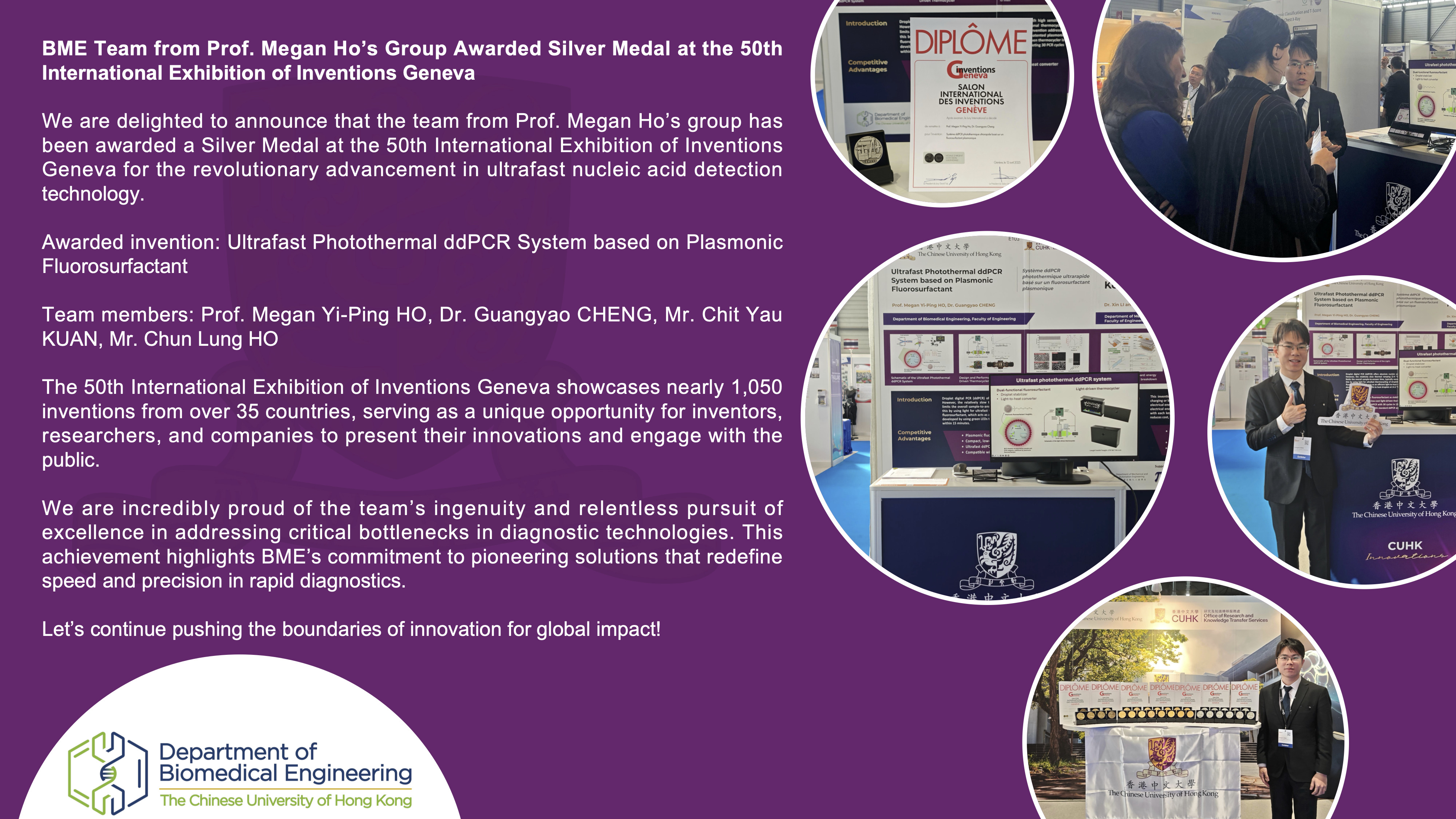Research Highlights
Ultrafast Photothermal ddPCR System based on Plasmonic Fluorosurfactant Awarded the Silver Medal in Geneva
April 22, 2025

BEAD-ID Platform for High-Throughput Detection of Essential Enzyme Activities
January 11, 2025
The Microfluidics Innovated Bio-Applications (MIB) group in the Faculty of Engineering at the Chinese University of Hong Kong, has developed the BEAD-ID platform, which leverages a specialized porous hydrogel bead to enable high-throughput detection of essential enzyme activities.
Importance of DNA-Modifying Enzymes
DNA-modifying enzymes play critical roles in maintaining the structural integrity of DNA and RNA during key cellular processes such as transcription and replication. Topoisomerases, a subset of these enzymes, alleviate topological tension caused by supercoiling during replication or transcription. Specifically, topoisomerase 1 (TOP1) serves as both a biomarker and a target for certain anticancer therapies. Additionally, bacterial restriction endonucleases (REs) defend against viral infections by cleaving specific DNA sequences known as restriction sites. While traditional methods such as western blotting and PCR effectively quantify these enzymes, they neglect the assessment enzymatic activities, which are vital for understanding their biological functions.
Innovative Microreactors for Enzyme Activity Detection
Under the leadership of Professor Megan Yi-Ping Ho in the Department of Biomedical Engineering, the team developed the BEAD-ID platform, which employs hydrogel beads as microreactors for evaluating DNA-modifying enzyme activities. This advancement is inspired by prior on-slide isothermal detection methods. The three-dimensional microporous structure of the hydrogel beads favours the diffusion of biological reagents and improves binding capacity, surpassing limitations of surface-based detection techniques. This innovative assay offers a versatile and customizable platform for analysing enzyme activities, as various parameters of the hydrogel beads can be controlled during their production. “Hydrogel beads, specifically constructed from polyacrylamide, present numerous advantages over alternatives such as on-slide and solid particles. They can be uniformly produced at rates exceeding 1,000 beads per second using droplet microfluidics, possess a high surface-to-volume ratio, and allow for facile modifications,” stated Professor Ho.
Flow Cytometry-Mimicking Detection of Fluorescent Hydrogel Beads
In an era where high-throughput detection is essential, the adaptation of detection methodologies to bead systems facilitates diverse visualization and detection pathways. A customized optical setup allows the hydrogel beads to flow past a detection point within a microfluidic chip, analogous to flow cytometry, enabling the detection of 0.72 nM TOP1 with an impressive throughput of 352 Hz. Dr. Kathrine N. Borg said, “This is yet another advantage of incorporating hydrogel beads in our assay, as they provide automation alongside integrated analysis – features that are highly favourable in clinical settings.”
Versatility of BEAD-ID
The tailorable properties of the hydrogel beads render the BEAD-ID platform suitable for a broad spectrum of biochemical reactions, functioning effectively as microreactors and carriers while supporting high-throughput detection. Building on previous validations of the specificity of the DNA nanosensors against other DNA-modifying enzymes, as well as TOP1 from different origins, and EcoRI, we anticipate that BEAD-ID will find immediate applications in the detection of foodborne pathogens and a diverse array of biochemical assays. The platform’s high-throughput capabilities and adaptable hydrogel bead properties facilitate objective and versatile assessment across multiple applications.
By Kathrine Nygaard Borg.